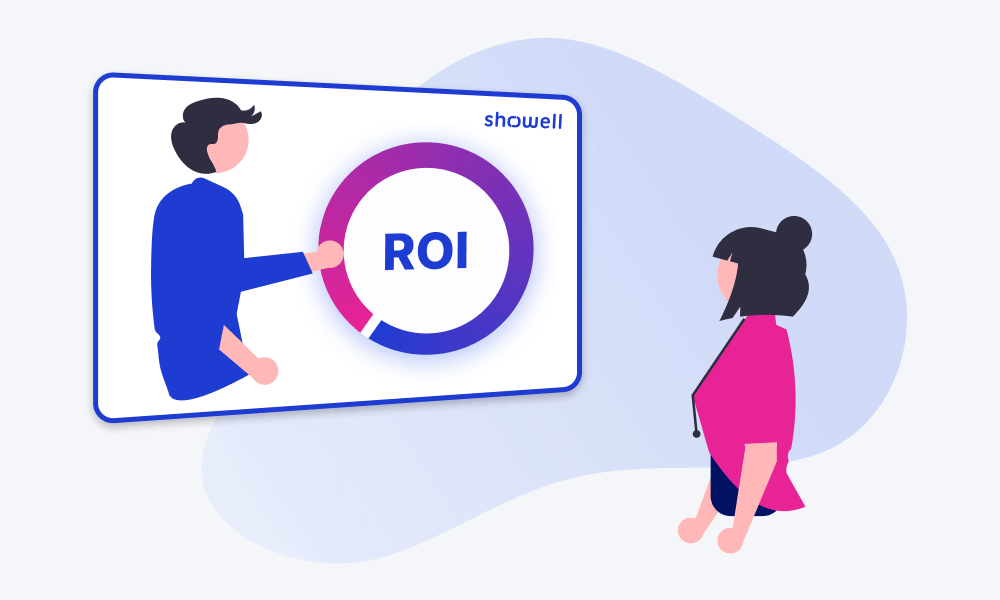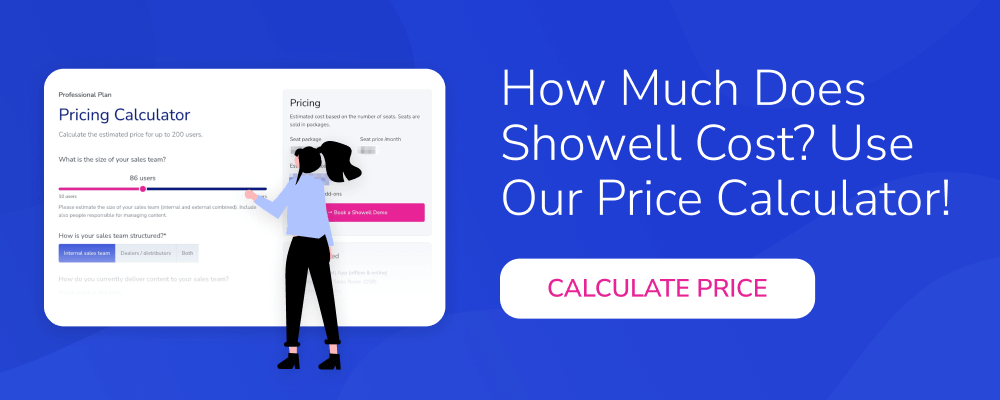In an age where products are plentiful and consumer choices are abundant, a compelling product story can be the determining factor that sets your brand apart. A powerful narrative not only showcases the unique selling propositions of your product but also connects with the audience on an emotional level, making your offering more relatable and memorable.
In the business world, a captivating story is an instrumental tool for persuasion. As such, people in sales and marketing need to master shaping their product stories into engaging narratives that move their audiences to action.
In the following sections, we delve into the significance of storytelling in sales, the essential elements that make a product story, and how to effectively weave these elements to resonate with your target audience.
By the end of this blog post, you will be well-equipped with the knowledge and tools needed to create a product story that has the power to transform your sales presentations and significantly influence your customers' purchasing decisions.
Table of Contents
- Understanding the Power of Storytelling in Sales
- What is a Product Story and Why Does it Matter?
- How to Craft Your Unique Product Story
- Tailoring Your Product Story for Different Buyer Personas
- Incorporating Your Product Story into Sales Presentations
- Measuring the Performance of Your Product Story in Sales Presentations
Understanding the Power of Storytelling in Sales
Since the dawn of civilization, storytelling has been an integral part of human communication. Our brains are wired for stories; we're naturally inclined to seek patterns, and narratives help us understand our world, and our place in it, and drive our decision-making.
Storytelling has always been a fundamental human practice and for a good reason. Stories captivate us, help us understand complex ideas, and more importantly. This concept applies even more strongly in sales, especially in a B2B setting where products and services can often seem complex and abstract. Simply put, a captivating story is an instrumental tool for persuasion.

But why do stories work so effectively? The answer lies in our brains. Our minds are wired to respond to stories. According to research conducted by Paul J. Zak, a renowned neuroeconomist, our brains produce the neurochemical oxytocin when we hear a narrative that arouses empathy. This oxytocin production enhances our capacity to empathize with the characters in the story, making us more likely to support and cooperate with them.
In the context of sales, this means that a well-told product story can encourage your audience to connect with your brand on a deeper level, making them more likely to invest in your offering. Selling has evolved beyond plain facts and figures and delve into the art of storytelling.
Our product narratives should be compelling enough to capture our audience's attention, evoke their emotions, and make our offering unforgettable. This is the true power of storytelling in sales.
Read more about 5 Proven Storytelling Techniques in Sales to Improve Your Pitch →
What is a Product Story and Why Does it Matter?
A product story is more than a list of features or a dry description of what your product does. At its heart, a product story is a narrative that explains the journey of your product, from its inception to its ultimate purpose - solving a problem for your customer. It involves the inspiration behind your product, the challenges it solves, its unique selling propositions, and the value it provides to the customer.
There are three main elements of a compelling product story:
- Background
This includes the inspiration and motivation behind the creation of your product. It's where you share the 'why' of your product. For instance, how Slack was developed initially as an internal communication tool for a gaming company before evolving into a leading platform for workplace communication. - Journey
This highlights the challenges your product can solve and the benefits it offers. It's where you illustrate the 'how' of your product. Using the Slack example, this could be a story of how a company improved its team communication, boosted productivity, and eased remote work challenges using Slack. - Outcome
This depicts the end results or the transformation your product promises. It's the 'what' of your product. It could be the story of how a company, by using Slack, significantly reduced its email overload, and enhanced project coordination.
According to Harvard Business Review, customers are not just buying a product, they're buying the story that's connected to it. In a sea of similar products, a compelling product story makes your offering stand out and helps build a connection with your customers.
A well-crafted product story does more than sell; it builds brand loyalty and boosts customer conversion. When customers relate to your product's story, they see the value in your offering and are more likely to become loyal advocates for your brand. This is especially important in the B2B context, where building long-term relationships is critical for upselling, cross-selling, and retention.
A compelling product story is not a nice-to-have, but a must-have in today's competitive marketplace. It breathes life into your product, transforming it from a mere object into a solution that can change lives and solve problems.
How to Craft Your Unique Product Story
Crafting a unique product story requires a deep understanding of your target audience, product, and the unique value your offering provides. Here's a step-by-step guide on how to craft an engaging and authentic product story:
1. Identify and Incorporate Your Unique Selling Propositions (USPs)
Your USPs are the features or benefits that set your product apart from the competition. To identify these, you need to understand your product intimately and know what makes it unique. Once you have identified your USPs, weave them into your product story to highlight the unique value your product offers.
Consider Apple's iPhone, for example. One of its USPs is its seamless integration with the Apple ecosystem, which provides a smooth, efficient, and user-friendly experience. This is an integral part of the iPhone's product story and is emphasized in all of its marketing communications.
2. Balance Emotional and Logical Appeals
A compelling product story strikes a balance between emotional and logical appeals. Emotional appeals help to create a connection with your audience and make your product memorable. Logical appeals, on the other hand, provide the hard facts and practical reasons why your product is the best choice.
For example, Tesla appeals to emotions by emphasizing their mission to accelerate the advent of sustainable transport. They appeal to logic by highlighting their cars' efficiency, performance, and safety features. The balance of these two elements makes for a powerful product story.

3. Maintain Authenticity
In the age of social media and instant information, customers are becoming more discerning and value authenticity. Authenticity creates trust and fosters a deeper connection with your audience. It involves being honest about your product's strengths and weaknesses and sharing real customer experiences.
In a study by Stackla, 90% of consumers stated that authenticity is important when deciding which brands they like and support. So, make sure your product story is true to your brand and resonates with your brand values.
For instance, Patagonia, an outdoor clothing and gear company, maintains authenticity by staying true to their environmental conservation mission in all their product stories.
Remember, crafting a unique product story is not a one-time activity. It should evolve as your product grows and as you gain more insights about your customers. By incorporating your USPs, balancing emotional and logical appeals, and maintaining authenticity, you can create a compelling product story that will captivate your audience and set your product apart.
Tailoring Your Product Story for Different Buyer Personas
Understanding your buyer personas is crucial in shaping your product story. Each buyer persona represents a different segment of your target market with distinct needs, challenges, and motivations. Therefore, to resonate with each persona, your product story must reflect these differences.
First, you need to clearly define your buyer personas. This involves identifying their professional roles, their challenges, their goals, and the value they are seeking from your product.
Once you have a clear understanding of your buyer personas, you can tailor your product story to resonate with each of them. Here are some strategies:
1. Highlight Relevant USPs
Each buyer persona may value different aspects of your product. For example, a CEO might be more interested in the strategic value your product provides, while a technical manager might be more interested in the product's technical specifications. Therefore, you should highlight the relevant USPs for each persona in your product story.

2. Relate to their Emotions
Each buyer persona has different professional challenges and emotions associated with these challenges. For example, a marketing manager might be frustrated with the inefficiency of their current sales content management tools, while a sales manager might be worried about meeting their sales targets.
By understanding these emotions, you can shape your product story to address these feelings.
Showell's presentation features allow you to present your product story in an interactive way that acknowledges and addresses these emotions, thereby creating a stronger emotional connection with your audience.
Check out Showell's Sales Presentation →
3. Personalize your Messaging
A one-size-fits-all product story will not resonate with all your buyer personas. Therefore, it's important to personalize your messaging to suit each persona.
According to a study by Salesforce, 84% of customers say being treated like a person, not a number, is very important to winning their business. By tailoring your product story for different buyer personas, you can ensure that your customers feel understood and valued, thereby increasing your chances of winning their business.
Incorporating Your Product Story into Sales Presentations
Incorporating your product story into your sales presentations is crucial for engaging your audience and making a memorable impression.
Here are some tips and techniques to weave your product story seamlessly into your sales presentations:
1. Start with the Problem
Make that connection between the problem and how your product or solutions solves it. This helps to grab your audience's attention and makes your product relevant to them. Making this problem-solution connection also helps your prospects identify areas of opportunities where they can improve. So, start strong with that!
2. Leverage Visual Aids
Visual aids can help to bring your product story to life and make it more engaging. Infographics, diagrams, videos, and images can help to illustrate your product's features, benefits, and impact. For example, you could use a graph to show how much time-saving they can have or more sales opportunities booked after using your product.

3. Use Analogies
Analogies make complex concepts easier to understand and more relatable. If your product is technical, consider using an analogy to explain how it works. For instance, you could liken your email marketing software to a personal assistant who knows exactly when and how to deliver messages for the best response.
4. Incorporate Testimonials and Case Studies
Testimonials and case studies can help to make your product story more credible and compelling. They provide proof of your product's effectiveness and show potential customers that others have benefited from your product. For example, you could share a case study of a company that significantly optimized its content management process during annual product launches after using your product.
Research shows that 92% of consumers are more likely to trust non-paid recommendations than any other type of advertising. So, consider using testimonials and case studies to boost the credibility of your product story.
Read more about 10 Secrets To A Winning Sales Presentation →
Measuring the Performance of Your Product Story in Sales Presentations
Finally, it's crucial to measure the performance of your sales content. This can help you to understand which parts of your product story resonate with your audience and which parts need improvement. Sales Enablement Platforms like Showell allow you to track for example different sales content engagement metrics like open and view rates, time spent on viewing, share rate, and download rate. This will allow you to refine your product story and sales presentations over time, ensuring they continue to be effective and engaging.
Read more about All You Need to Know About Measuring Sales Content Performance →
Learn next:
In summary...
Creating a compelling product story is a powerful sales enablement content strategy that can significantly boost your sales and marketing efforts. The key lies in understanding the power of storytelling and the unique value your product offers. By crafting a unique product story and tailoring it to resonate with your different buyer personas, you can captivate your audience and set your product apart from the competition.
Remember, the best product stories strike a balance between emotional and logical appeals, maintain authenticity, and are seamlessly incorporated into sales presentations. They don't just highlight what a product does, but the value it provides and the difference it can make in the lives of its users.
In the end, the success of your product story isn't just about the story itself, but about the genuine value you deliver to your customers. And there's no better story to tell than one of genuine transformation and success.
Learn next:
-
10 High-Impact Types of Sales Collateral That Drive Results + Examples
-
How to Close a Presentation?
-
Updated 2024: List Of Top Sales Presentation Templates You Need
- 6 Use Cases of 3D Configurator Software in Sales Enablement
-
5 Essential Elements of a Winning Sales Proposal in B2B Sales
- Asking for the Sale: When and How to Do It + 10 Questions You Can Use
If you’re looking to better incorporate your product story for a more resonant sales presentation, book a demo by clicking the banner below or Get Showell Free to see how Showell can impact your sales content performance!





